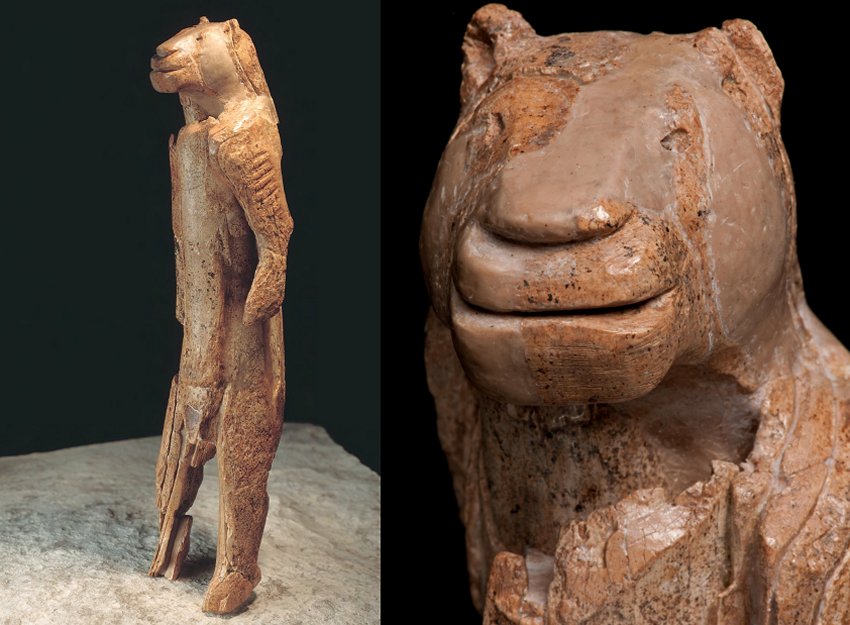A. Sutherland - AncientPages.com - On August 25, 1939, archaeologists working at a Paleolithic site called Stadelhole ("stable cave") at Hohlenstein ("hollow rock") in the Lone valley, southern Germany, uncovered hundreds of mammoth ivory fragments.
About 40,000 years ago, at the beginning of the upper paleolithic period, the Swabian Jura was part of the living area of the early, anatomically modern, humans (homo sapiens).
Archaeologists found evidence that these prehistoric people, lived in several caves: they used campfires, tools, weapons and jewelry made out of stone, bone, antlers and ivory.
Moreover, they also sculptured small figurines depicting dangerous animals such as cave-bears and cave-lions, using stone tools out of mammoth ivory.
The tallest and most spectacular of the ivory figurines is the Lion Man, a fabulous therianthropic creature.

For more than 70 years, archaeologists have been piecing together the 'Lion man' out of mammoth ivory fragments.
Unfortunately, just one week later, before archaeologists could complete their fieldwork and analyze the finds, World War II began. The team was forced to quickly fill the excavation trenches using the same soil in which they found the ivory pieces.
Among the fragments, there were several pieces of the so-called 'Lion man' - one of the oldest and certainly one of the most remarkable statuettes in human history.
For more than 70 years, archaeologists have been piecing together the fragmented sculpture of 'Lion man' out of mammoth ivory fragments.
Their work took time because important parts of the figurine were still missing.
Surprisingly, in 2009, new excavations inside the Stadel Cave rediscovered of the original finding place of the ‘Lion Man’ fragments unearthed in 1939.
They were able to retrieve numerous additional fragments of the figure. It's the tallest and most spectacular of the ivory figurines discovered in four caves. The figurine that combines animal and human attributes, is 29.6 cm (11.7 inches) in height, 5.6 cm wide, and 5.9 cm thick.
The animal part is represented by the lion-head, the long shaped body and the arms formed as forelegs and paws of a big cat, the human part by the legs and feet, as well as the upright position.
It's unclear whether the figurine represents a man or a woman. From time immemorial, the lion has been viewed as a symbol of the masculine virtues of courage and strength. Shamans still exist today in the Amazon region and Australia. Most of them are men.
On the other hand, the figure has some perplexing features. The navel, for example, a symbol of childbirth, is especially pronounced. A horizontal crease runs across the lower abdomen, a feature that is typically female.
The ‘Lion Man’ - currently on display in the City Museum of Ulm, in Germany - represents a unique relic, carved out of woolly mammoth ivory using a flint stone knife.
It is also very early prehistoric sculpture dated back to the Upper Paleolithic of about 40,000 BC.
Written by – A. Sutherland AncientPages.com Staff Writer
Copyright © AncientPages.com All rights reserved. This material may not be published, broadcast, rewritten or redistributed in whole or part without the express written permission of AncientPages.com
Expand for references






